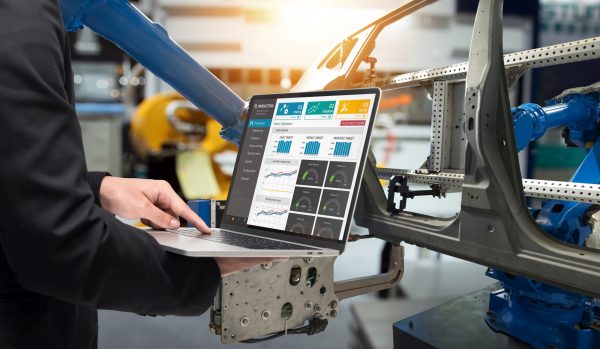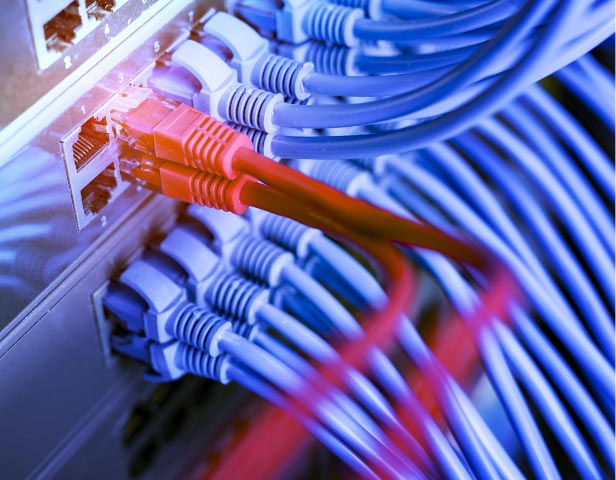Any questions?
We are happy to support and advise you about our solutions that meet your requirements.
The language of the future
ABAX builds on 25 years of experience in IT technologies for your successful projects around Industry 4.0 and IoT
Realizing the networking of physical and virtual objects via information technology and generating important insights from this: This is the Internet of Things (IoT). Support and improve your daily work processes in the company with a future-proof and sophisticated network technologies. With ABAX as your partner, you create the basis for digitalisation, establish modern communication channels and thus secure a competitive advantage.
We accompany you from the planning stage to the implementation and ongoing optimization of your systems. Use existing resources, expand them with intelligent functionalities and make your company fit for new requirements, services and markets.


IoT devices are smart and connective, but they are rarely sufficiently fused. No IoT project can therefore be successfully implemented without considering cyber security.

These systems are increasingly coming to the forefront as potential targets for cybercriminals. A failure of such systems has far-reaching consequences for the public, people and companies.
Seize new opportunities
timely action is important now!
IoT supports people imperceptibly in their daily tasks. Whether in the private household or in the industrial environment, it is hard to imagine life without "intelligent networking".
This brings with it a significant advantage - greater productivity despite lower costs. Machine-to-machine (M2M) communication makes our everyday lives a lot easier and creates new business models with new growth opportunities.
Thanks to networked machines, the industry sees new opportunities for growth. Systems and sensors collect, process and transmit information in order to derive real-time decisions. Secure, guaranteed data transmission is thus a cornerstone in the planning of IoT and Industry 4.0 projects. You don't have to reinvent the wheel to achieve this. ABAX supports you in the implementation with over 25 years of experience in IT infrastructure topics.
We are happy to support and advise you about our solutions that meet your requirements.
A functioning infrastructure is the key to the successful implementation of IoT and Industry 4.0 projects. It is the prerequisite for the meaningful collection and display of sensor values.
The increased network traffic caused by the growing number of systems forces insufficiently designed networks to their (performance) knees. ABAX supports you in the secure transmission of your data, analyzes and optimizes them for you in a targeted and meaningful way.
As a structured cabling refers to the cabling within and between buildings. It is thus the basis of modern IT infrastructure and for systems that are intended for the transmission of data. It is usually divided into primary, secondary and tertiary cabling.
Forward planning is an essential point in all cabling issues. This enables future-proof structures and prevents subsequent changes, additions and unplanned replacement of parts of the network. Structured cabling is hierarchical and uses star and tree topologies. The layout of all components must be adapted to the requirements of modern networks (switched networks). Therefore, planning includes not only cables but also components such as cables, connectors, junction boxes and patch panels. These must be insensitive to interference, guarantee secure transmission and include redundant lines.
The primary area comprises the cabling of buildings at one location to each other. This area includes cables from site distributors to distributors in buildings as well as the building distributors and the cables between the building distributors. Since large distances have to be covered here, fiber optics (multi- or single mode) are particularly used, since a high transmission rate (bandwidth) with very good attenuation (shielding) can be achieved here. For shorter distances copper cables are still in use.
This area covers the cabling of the floors of a building to each other. The floors within buildings are connected, i.e. from the building distributor to the distributors on the floors. Depending on the requirements, fibre optic or copper cables are also used here.
This area is also called floor cabling, because cabling is done within the floors of a building. The floor distributors are connected to the individual junction boxes. So usually the cable goes from a patch panel to junction boxes in the wall, in a cable duct or in a floor tank with an outlet. Fibre optic cables are usually used here as well.

Wir verwenden Cookies, um unsere Website möglichst benutzerfreundlich zu gestalten. Mit dem Klicken des Buttons "Annehmen" stimmen Sie der Setzung aller Cookies zu.
Die Cookies von US-Anbietern sind standardgemäß inkludiert. Wollen Sie nicht notwendige Cookies und US-Cookies ablehnen, klicken Sie bitte auf den Button "Einstellungen", und danach auf "Annehmen".
Annehmen Einstellungen Ablehnen
Mehr lesen